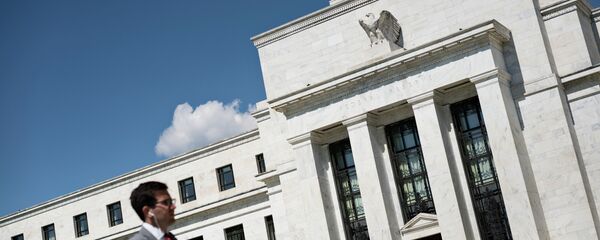According to a report from the US Department of Commerce released on Friday, the US economy expanded by 1.2 percent in Q1, an upward revision from the 0.7 percent growth posted a month ago. The slowdown in private sector investment and consumer spending was not quite as dramatic in the first three months of the year, but the main driving forces of the economy remain subdued.
"The second estimate paints a better picture about the degree of slowing in activity at the start of the year, but the main concern about soft growth in private consumption remains," Michael Gapen of the New York branch of the UK bank, Barclays, said.
The revision surpassed earlier market expectations as many investors and observers were inclined to believe that the slowdown in the US economy was more prominent. Federal Reserve officials believe the pace of economic growth will pick up in the current quarter due to the labor market’s strength and gains in inflation.
"Most participants judged that if economic information came in about in line with their expectations it would soon be appropriate for the committee to take another step in removing some policy accommodation," minutes from the Federal Open Market Committee’s (FOMC) meeting on 2-3 May released on Wednesday read.
Among the main reasons for the upward revision were the data on electricity usage in February, reflecting a solid demand for energy in the middle of the first quarter. Persistently low US demand for energy is believed to be affecting overall economic performance.
US corporate revenues continued their rebound, adding 3.7 percent year-on-year, a third consecutive quarter of expansion. Corporate profits had declined in 2015 and the first half of 2016, meaning the ongoing rebound is a positive sign for overall business investment.
However, the Commerce Department’s revision also found that stockpiles subtracted 1.07 percent from GDP growth compared to a 0.93 percent subtraction reported a month ago. Spending on health care rose only by 0.10 percent compared to 0.37 reported initially.
Other components of the current Q1 GDP reading were, however, revised upward. Net exports contributed 0.13 percent to the pace of economic growth compared to 0.07 percent reported initially. Non-residential fixed investment, at 11.4 percent, as outlined above, was also subject to revision from 9.4 percent.
The Commerce Department will release its third, and final, estimate of Q1 GDP growth in about a month, and a yearly revision in July.
Regarding the Q2 estimates, which determine the current expectations of the Federal Reserve’s monetary policy, the US real estate market provides further evidence supporting the hikes in base borrowing costs. Despite exacerbating affordability issues, US home prices keep advancing robustly amid the lingering lack of supply. That said, US construction has been improving recently, but at a pace not enough to match the effective demand, fuelled by the still fairly low borrowing costs.
"Healthy demand and low inventory continue to place upward pressure on home valuations," John Silvia of the bank Wells Fargo said. "Those trends look to remain in place in the near term and therefore continue to underpin solid, single-digit home price increases."
The gains in home prices support the overall inflation, which is poised to overshoot the Fed’s 2 percent target. Besides, the rapid gains in home prices bear the hazard of an asset bubble in the real estate sector, which, albeit an unlikely near-term development, is still something the Fed would opt to prevent by interest rate hikes sooner rather than later.
At the second quarter’s close, a Fed base borrowing costs hike is therefore a likely probability, with rates going up to 1-1.25 percent, and possibly up to 1.5-1.75 by the end of the year, thus laying a solid foundation for the White House’s fiscal stimulus to kick in at the right moment in the autumn of 2017.







